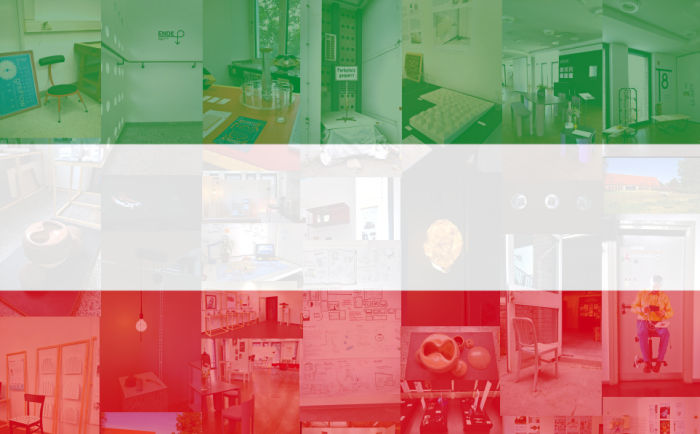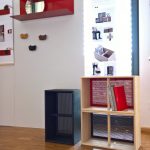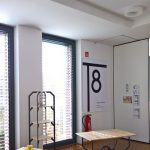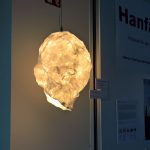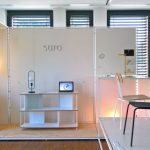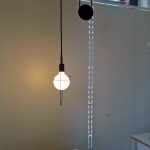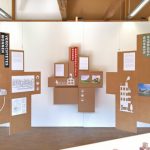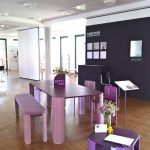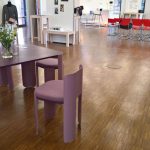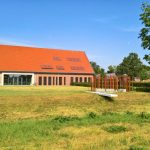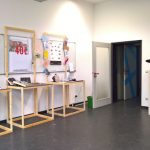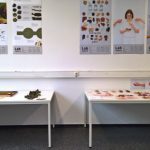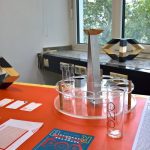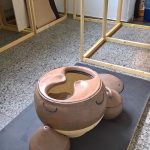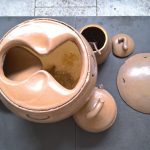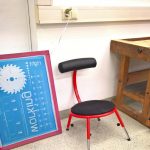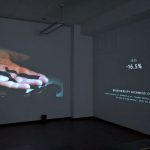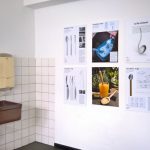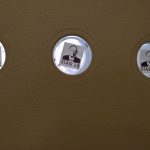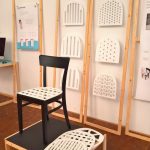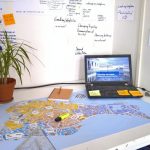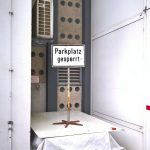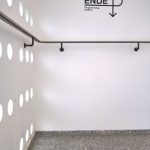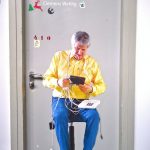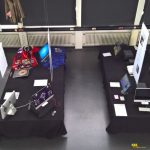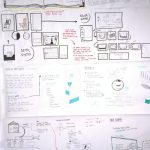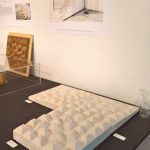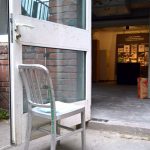#campustour 2019: Germany – Nordrhein-Westfalen
With its abundance of forests, earths, coals and waterways the contemporary Nordrhein-Westfalen has long been an important centre of production, industry, trade and by extrapolation design and creativity; at various stages in history important impulses and innovation radiating from communities such as Aachen, Hagen, Krefeld, Essen, Soest or Düsseldorf…….
………and since the end of the 19th century from the myriad of art, applied art, architecture and design schools dotted throughout the region: a myriad from which logistical realities, and some most unfortunate timetabling, regrettably, meant that the 2019 smow blog #campustour only visited two. If two that represent very different approaches to design education…….
Designer HWK, Akademie für Gestaltung Münster
One of Germany’s’ largest Gestalter im Handwerk institutes the Akademie für Gestaltung Münster provides not only training in a number of craft/applied craft disciplines but courses of study which extend the training beyond craft/applied craft to include design practice and design theory, and thus in many regards not only provides for an expanded understanding of the craft/applied craft professions, but an alternative approach to developing a position to and understanding of design.
And also offers the opportunity to undertake one of the more unique graduation projects, namely establishing a company, an opportunity undertaking by, amongst others, Enzo Sundermann and Wladimir Rommel who as SURO not only continued the tradition of Akademie für Gestaltung Münster graduates using the first letters of their surnames to form the basis of the company name, but also presented an initial collection from which we were most taken by the lamp Callisto, for all in the pendant version, and not just because it is a height adjustable pendant lamp but on account of the way the satisfyingly paired down, neatly balanced and proportioned, form subliminally invites you to interact with it, as a work it is instantly readable without being obvious or overly forward. And a work that pleasingly avoids the almost overpowering temptation to go off in a faux-industrial direction. Is arguably more faux-laboratory. Assuming that is a thing.
Similarly taking the opportunity afforded Kai-Stefan Masopust and Merle Pötting established themselves as ER UND SII, and thereby have not only broken with the Münster naming tradition but also the traditional spelling of sie (her); a contemporary, very free, attitude to spelling they continue into their poortfolio where all the product names are forenames containing an extra letter, for example, Fraanz, Hellga, Eerich or Noraa, the latter being the sort of object that one could well imagine a DDR functionary describing as being “just a box”. Which it is. Albeit a box which via a series of very small, almost non-existent, interventions Kai and Merle have given universes of functionalities, sitting, storage, transport, display etc functionalities which we guess, and remaining in the ER UND SII morphological framework, makes it a boox, or perhaps even a booox, while the perforated back wall (should) allow(s) it to disrupt the distribution of light and thus influence the atmosphere of a space.
Space, in a much wider, compacter?, sense, being a central theme in three, count them three, projects concerned with contemporary living in small spaces: media designer Fabian Kroth’s documentation of tiny homes and their occupants; project designer Pia Kampstein’s concept for a sustainable 82sqm house: and Vanlife by carpenter Philipp Altenburger and stonemason Henrik Nolte, which, as the title neatly implies, saw the pair develop an interior design concept for a camper van. And three, count them three, projects concerned with living in small spaces, which leads one to suspect there is a certain tightness, pressure, in and on the contemporary Münster housing market. A suspicion heightened by carpenter Niklas Schulz and interior designer Janina Schütte’s project Social living in urban spaces which first investigated and subsequently presented various aspects of the contemporary realities and challenges of urban accommodation and space utilisation in an exhibition concept.
Elsewhere, and amongst many other projects, Sofie Capell-Höpken developed, in cooperation with Kempen based saddle manufacturer Stübben, a further development of the stirrup strap, one designed to improve not only the comfort but experience for the rider; Corinna Clausen experimented with hemp as a future-orientated material, including the presentation of a lamp crafted from hemp paper, a material almost as old as mankind, but which, most curiously, is principally used for cigarette papers; then there was Betty, neither Ugly nor Boo, but Handsome and Hurrah!
Designed by Lea Heider the Betty table and seating collection is crafted from sheet steel and based on rounded quadrant legs connected by a cross-frame, and thus an elegantly coherent systems whose inherent, easy, variability allows for a collection that feels unified without being monotonous. And a collection which despite its visual lightness has a physical mass: they really, really, aren’t the sort of objects you want to bang your toe against. And while in many regards the tension between the visual lightness and physical mass is important for the objects, bequeaths the collection its fascination, arguably a different material, aluminium?, plastic?, would create more user friendly objects. But aside from such considerations as a collection, and as individual objects, joyous and most engaging. And thanks to Leadbelly the colour for any future generation is also predestined…….
Further information on the Akademie für Gestaltung Münster can be found at www.akademie-gestaltung.de
- Noraa by ER UND SII a.k.a. Kai-Stefan Masopust and Merle Pötting, as seen at Designer HWK, Akademie für Gestaltung Münster
- The T8 furniture collection by Peter Grohmann, as seen at Designer HWK, Akademie für Gestaltung Münster
- Hemp paper lamp by Corinna Clausen, as seen at Designer HWK, Akademie für Gestaltung Münster
- SURO a.k.a. Enzo Sundermann and Wladimir Rommel, as seen at Designer HWK, Akademie für Gestaltung Münster
- Callisto height adjustable pendant lamp by SURO a.k.a. Enzo Sundermann and Wladimir Rommel, as seen at Designer HWK, Akademie für Gestaltung Münster
- Soziales Wohnen im Urban Raum by Niklas Schulz and Janina Schütte, as seen at Designer HWK, Akademie für Gestaltung Münster
- Betty by Lea Heider, as seen at Designer HWK, Akademie für Gestaltung Münster
- Betty by Lea Heider, as seen at Designer HWK, Akademie für Gestaltung Münster
- Akademie für Gestaltung Münster
KISDParcours 2019, Köln International School of Design, Cologne
Complicated and physically demanding as the exhibition title makes visiting the Köln International School of Design, KISD, summer exhibition sound, in reality it is much more straightforward: rather than leaping and somersaulting over obstacles you simply keep walking around the school’s Ubierring home in a circle, going either higher or lower as you do. As in physically higher or lower, although such student exhibitions can also be emotional rollercoasters. Which is of course why one should visit such, to expose oneself to that which pleases and that which irritates, to that which excites and that which revolts.
Among that which pleased and excited at the 2019 KISDParcours were projects such as, and amongst others, Myamo, a mycelium and cotton based modular acoustic panel system developed by Katharina Querbach; the varied results of the Lab Culture seminar which explored applications of biological systems in production and design systems, and from which one can well imagine a graduation project as pleasing as Myamo to arise; Christina Klüser’s Texture Chair graduation project in context of which she investigated tactility in the seating experience and proposed, if we’ve correctly understood, a chair with interchangeable seats, thus allowing each user to select a preferred tactile experience; while with Sensing Data Lisa Peter argues, in effect, that data we feel is data we respond to. Specifically Lisa took predictions for climate change in the coming 100 years and presented them not as charts and tables, but videos of, for example, sand being poured on a naked back to visualise the projected increase in global drylands or visualising reductions in biodiversity richness through black ink running down a wrist and hand. So, yes, at times sensual videos as well as a sensuous, emotional, representations of data.
The importance of emotion in shaping our behaviour played a (more or less) central role in Miguel Lobato’s project Future Vehicles for Recreation Travels in which he, and summarising to the point of inaccuracy, researched the emotional bonds between car and driver in context of the road trip, recreational driving rather than commuting or the school run, bonds that as Miguel notes will change in a coming future with new car ownership patterns and autonomous vehicles, noting that it may even intensify, if the road trip and recreational car use become the only chance to get behind the wheel. And thereby emotion that, for us, stands at the core of a certain egoism that surrounds cars, an understanding of the car as an extension of the individual, and/or a belief that one has an inalienable right to own a car and to drive whenever and wherever one will. If we can get over that egoism, that emotion, understand driving as a purely physical act, see the car as just one of numerous possibilities from getting from A to B, then we’ll be much, much further on the way to creating transport solutions that support mobility rather than cars. Transport solutions, arguably, such as those proposed by Moritz Kremer in his project Rail & Drive. The Potential of Intermodal Mobility as a Service, a project developed in cooperation with Austrian State Railways, ÖBB, and which allows users to plan a journey, for all journeys in/to/from rural areas, involving a combination of train and car sharing, and therefore to make a goodly part of your journey by train, with a smooth transfer to an alternative for that last/first bit that the train can’t reach. An alternative which presumably could be expanded to include bike sharing.
Elsewhere….
Smart Home in Japan by Katharina Mayer
Realised as part of a double graduation project, a Master of Arts from KISD and a Master of Engineering from Chiba University, Japan, Smart Home in Japan explores the apparent contradiction between on the one side the perceived fascination in Japan for all things electronic, robotic, & digital, and on the other the relatively slow adoption of smart home technology. We’d argue that being digital au fait and therefore understanding the inherent dangers, needlessness and foolhardiness of much smart home technology, the Japanese have simply decided against. Decided that a smart home is a dumb idea.
Taking a more open, inquisitive and academic approach Katharina identified what she refers to as six “invisible borders” within Japanese culture and society which in her view are preventing a quicker, more widespread, adoption of smart home technology, including a more clearly defined border between private and public space in Japan as compared to, for example, Europe, structural limitations within Japanese industry, and prevailing, deeply ingrained, gender attitudes/inequalities. We’ve not read the whole thesis, but it would certainly appear to be not only a very nice review and exploration of contemporary Japanese society, but also on the one hand tends to underscore that the difference between what designers/architects propose and consumers want is culturally anchored and on the other the inextricable link between technological developments/evolutions and social/cultural evolutions, and that it is a two way process, interaction, and a process/interaction that may move slowly, but moves. Although, and as we noted from the exhibition Spaces at ADAM Brussels, social media may be speeding things up a little. Be that good? Be that bad?
Puffer by Angélica Padilla
In our post from the UdK Berlin Rundgang we asked in context of the graduation project piPE by Marie Scheurer, “why doesn’t the waste water pipe from toilet sinks always run through the toilet?” With her project Puffer Angélica Padilla poses a similarly patently obvious question: why not use the space around a bath tub to collect water and use that water for flushing the toilet? No why not? Not only does it save that water which would otherwise be used for flushing a toilet, but also saves the processing of the bath water, or put another way results in less water being used and fewer resources needed for waste water treatment. Admittedly, yes, it does involve there being a bath tub present, which in ever fewer houses, for all new flats and apartments, is the case, but where a bath is present, why not? And surely with a little imagination a solution for showers can be found, particularly in non-domestic situations such as hotels, sport centres, prisons etc, etc, etc….
Humanwaste Recycle for Ceramics and Ecology by So Andrew Saito
From KISDParcours 2018 we posted on So Andrew Salto’s experimentation with sewer sludge ash, that which is left over when sewage sludge is incinerated, which apparently most of it is, and which Andrew used as the basis for a ceramic glaze. For his graduation project Andrew extended not just his experimentation but his thinking on human sewage, specifically his own, and, as he very elegantly phrases it, “I made a toilet out of my own poo”
Not directly, one hastens to add.
Rather Andrew developed a urine diversion toilet which allowed him to, if one will, harvest faeces which can then be carbonized and subsequently used as fertilizer or a fuel for a kiln. A kiln in which one can fire, amongst other objects, ceramic urine diverting toilets. The ash, as we know from Andrew’s previous research, can be used in the glaze thus creating not only a low-cost, low-tech, local, sustainable system for producing both ceramic goods of all sorts and fertilisers, but also a self-contained, circular, low-cost, low-tech, local, sustainable system for creating toilets. Thereby allowing for sanitary toilets to become wider distributed than they are today in our oh-so advanced society.
And toilets which, and as with Puffer and indeed piPE, help reduce the amount of waste put in to sewage treatment systems and thus reduces the resources required for processing human sewage. And thereby helping make sanitation, a key element in the hitherto, and henceforth, development of human society less of a burden on our planet.
Further information on Köln International School of Design can be found at https://kisd.de
- Results of the course Sustainable Souvenirs, as seen at KISDParcours 2019, Köln International School of Design, Cologne
- Results of the class Lab Culture, as seen at KISDParcours 2019, Köln International School of Design, Cologne
- Form follows Function – auch im Brauhaus: Bauhaus inspired design for Kölsch, as seen at KISDParcours 2019, Köln International School of Design, Cologne
- Humanwaste Recycle for Ceramics and Ecology by So Andrew Saito, as seen at KISDParcours 2019, Köln International School of Design, Cologne
- Humanwaste Recycle for Ceramics and Ecology by So Andrew Saito, as seen at KISDParcours 2019, Köln International School of Design, Cologne
- An anoymous chair found in a workshop, and hopefully found somewhere more fitting real soon
- Sensing Data by Lisa Peter, as seen at KISDParcours 2019, Köln International School of Design, Cologne
- Results of the class My cutlery – to go, as seen at KISDParcours 2019, Köln International School of Design, Cologne
- One of the last places you can still find these….. Although we know one or the other smowler will never forget those days…
- Texture Chair by Christina Klüser, as seen at KISDParcours 2019, Köln International School of Design, Cologne
- Results of the project Tourist Terrorism, as seen at KISDParcours 2019, Köln International School of Design, Cologne
- Annoying but can’t help thinking its a bit small … or is the idea to discourage staff from driving to work…..
- A corridor inside the UK Government’s Department for Exiting the European Union…… lthough fears a far flung coorrdor down which no one has ever erred……
- The man responsible for systems networks sits in room 410… given that a 410 error message means “gone”, is he ever there…….?
- KISDParcours 2019, Köln International School of Design, Cologne
- Puffer by Angélica Padilla, as seen at KISDParcours 2019, Köln International School of Design, Cologne
- Myamo by Katharina Querbach, as seen at KISDParcours 2019, Köln International School of Design, Cologne
- “Dear last person, pease pick me up” the KISD Emeco Navy Chair Gambiarra is a polite young thing…..
Tagged with: #campustour, Akademie Gestaltung im Handwerk Münster, cologne, KISD, KISDparcours, köln, Münster
